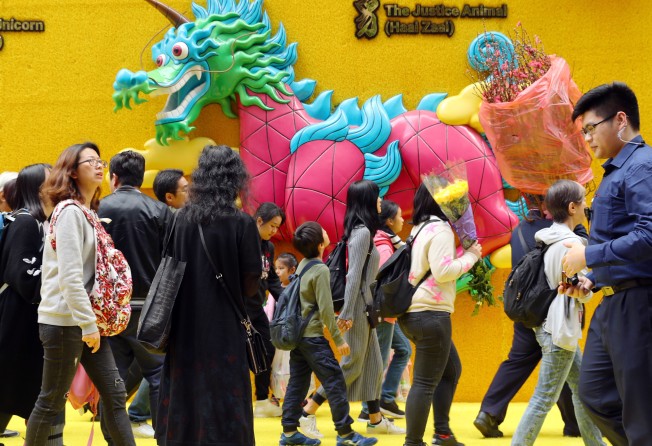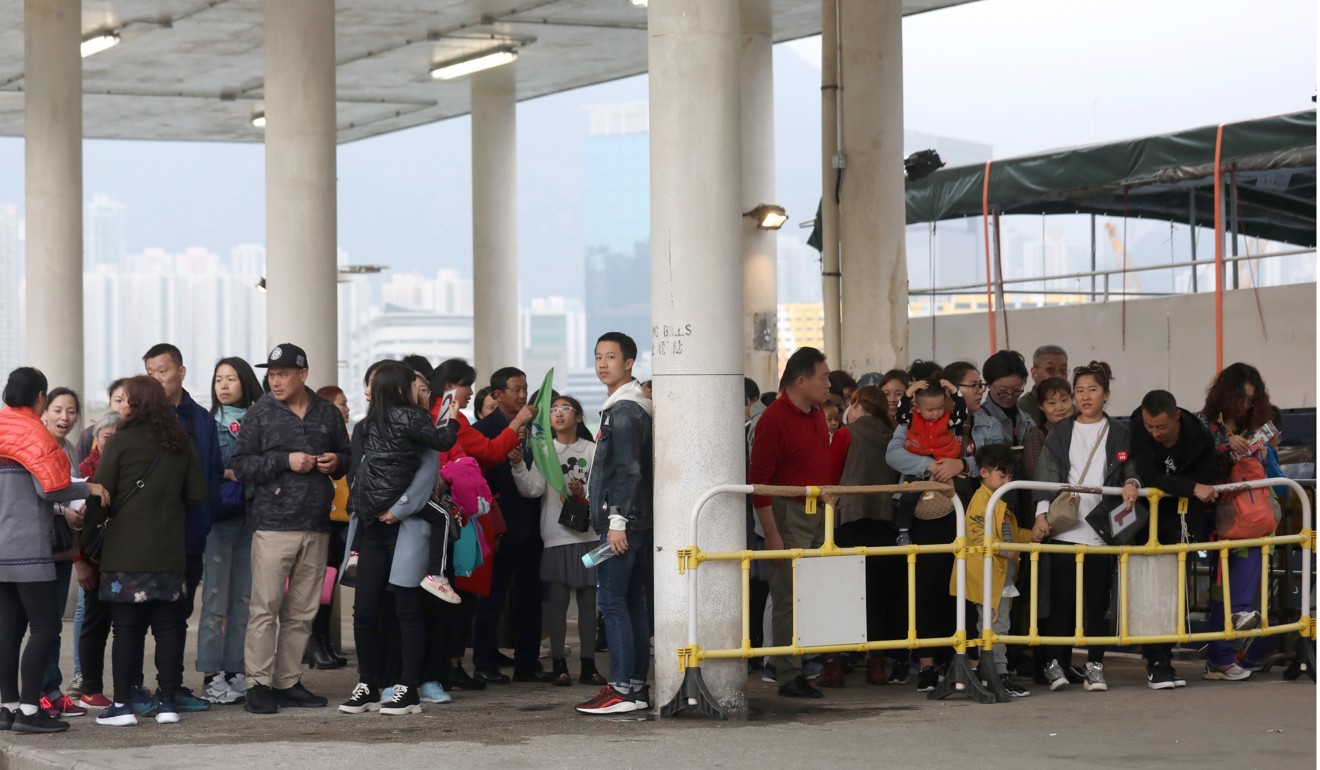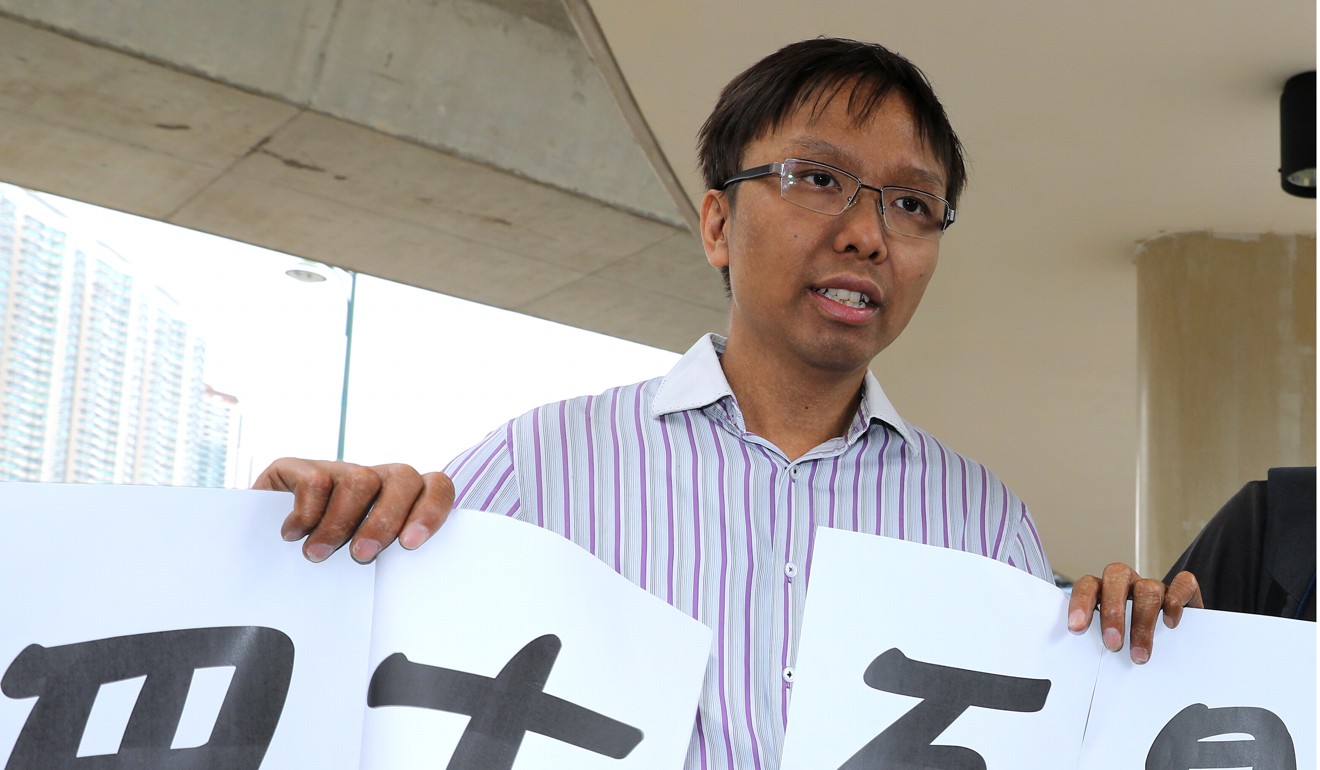
Forget about mainland Chinese visitor influx over Lunar New Year holiday, Hong Kong residents told, as tour group numbers expected to fall by half
- Travel Industry Council estimates 140 to 150 tour groups will arrive each day during the week-long Lunar New Year break starting from Monday
- However, activists warn of disruption by day trippers, who affect locals the most

The number of mainland Chinese tour groups visiting Hong Kong during the Lunar New Year holiday is expected to fall by half compared with December, with industry figures dismissing concerns about visitors inundating residential areas.
However, activists warned that even though diversionary measures had been put in place to guard against an influx of travellers to various districts, the moves would not cover individual day trippers, who affected local residents the most.
The Travel Industry Council estimated that 140 to 150 tour groups would arrive each day during the week-long festive break starting from Monday.

Just over a month ago, 300 groups arrived daily on average, sparking anger as visitors packed residential areas such as To Kwa Wan, Kowloon City and Hung Hom.
Alice Chan Cheung Lok-yee, the council’s executive director, said she was not worried about overcrowding over the holiday given fewer groups would visit.
Tourism sector lawmaker Yiu Si-wing agreed. “Sudden floods of mainland tourists at some local areas will not happen,” he said.
Yiu said travel agents would avoid arranging for mainland tours to visit To Kwa Wan, where visitors went to shop and dine, at the same time while some restaurants there would be closed.

The groups would instead go to areas such as Tsim Sha Tsui and The Boxes, a struggling shopping centre near the border with Shenzhen, for dining, he said, and they would not gather at ferry piers for Victoria Harbour cruises at the same time.
As a trial measure, the trade last Saturday started sending tour groups to The Boxes in San Tin for food.
Restaurant owners there said three tours, each of around 50 people, had arrived and helped to boost business.
But retailers did not feel the benefit as the groups only stayed for 45 minutes and did not shop.
Yiu dismissed concerns that thousands of travellers would arrive through incentive tours, where companies rewarded staff and clients at year-end with short trips.

“You have to see what the situation is like on normal days. It’s just that the Tung Chung incident sparked concerns about ‘Today Tung Chung, tomorrow us’, making people panic,” he said, referring to an influx of visitors to the town after the Hong Kong-Zhuhai-Macau Bridge opened in October.
The government has promised to maintain close contact with mainland authorities over cross-boundary services during the holiday week.
Travellers can check estimated waiting times at land boundary checkpoints via the Immigration Department’s mobile application. The Transport Department also issued 200 extra slots to cross-border coach operators on the mega bridge, bringing the total number of daily trips to 600 to meet demand.
Meanwhile, the operator of port-to-port shuttle bus services increased its fleet to over 185.
But Roy Tam Hoi-pong, of the Neo Democrats, said mainland day trippers with suitcases for shopping caused the most disruption to locals. He said most were Shenzhen residents.
“Earlier measures pinpointing To Kwa Wan will not affect individual visitors,” he said.

He estimated that over the past year, the number of day trippers arriving for shopping rose 10 to 20 per cent, compared with a year earlier.
Michael Li Hon-shing, executive director of the Federation of Hong Kong Hotel Owners, said hotels were 70 to 80 per cent occupied, which he expected to rise to 90 to 92 per cent by early next week, noting mainlanders tended to make last-minute bookings.
“They are adopting a more flexible itinerary because they are very familiar with Hong Kong already, so they may shop around the city during the day and stay in Shenzhen due to lower hotel rates since the commute there is quite convenient now,” he said.
Li said a room at a three- or four-star hotel would cost HK$1,300 (HK$167) to HK$1,400 a night, slightly more expensive than at other times but about the same as for the holiday last year.
Additional reporting by Rachel Leung